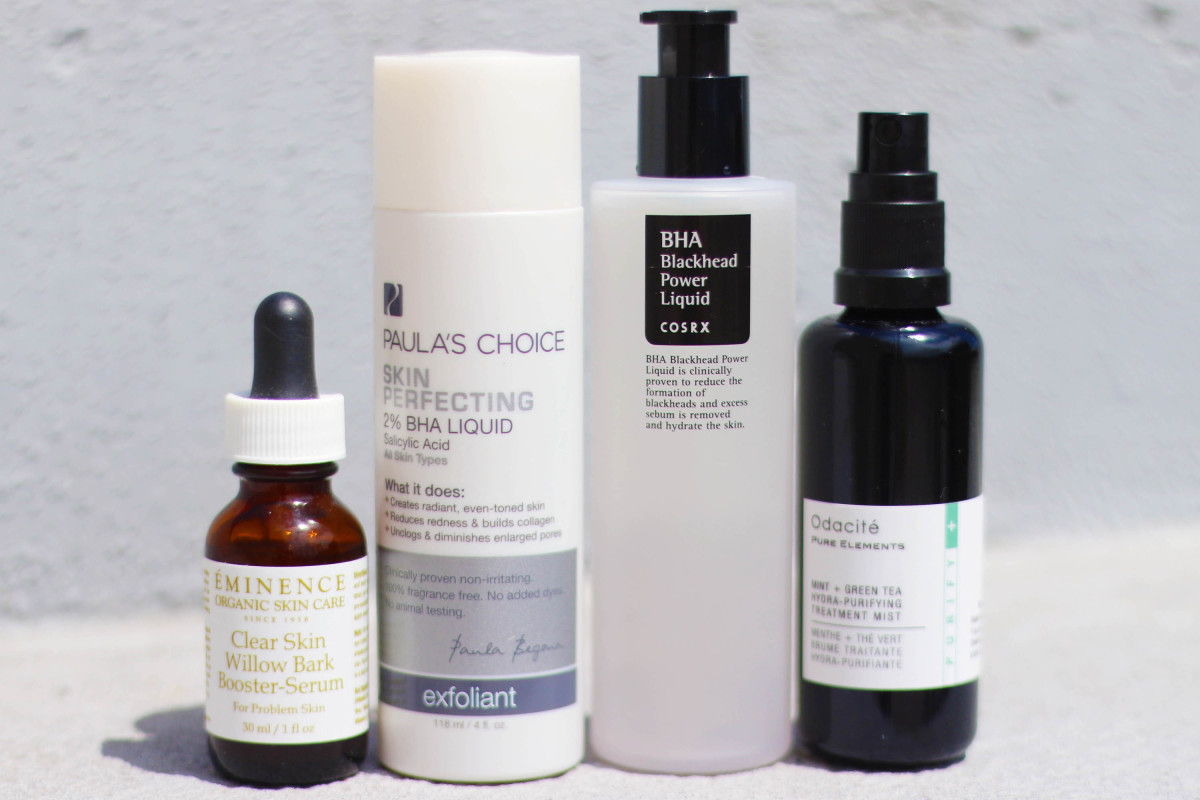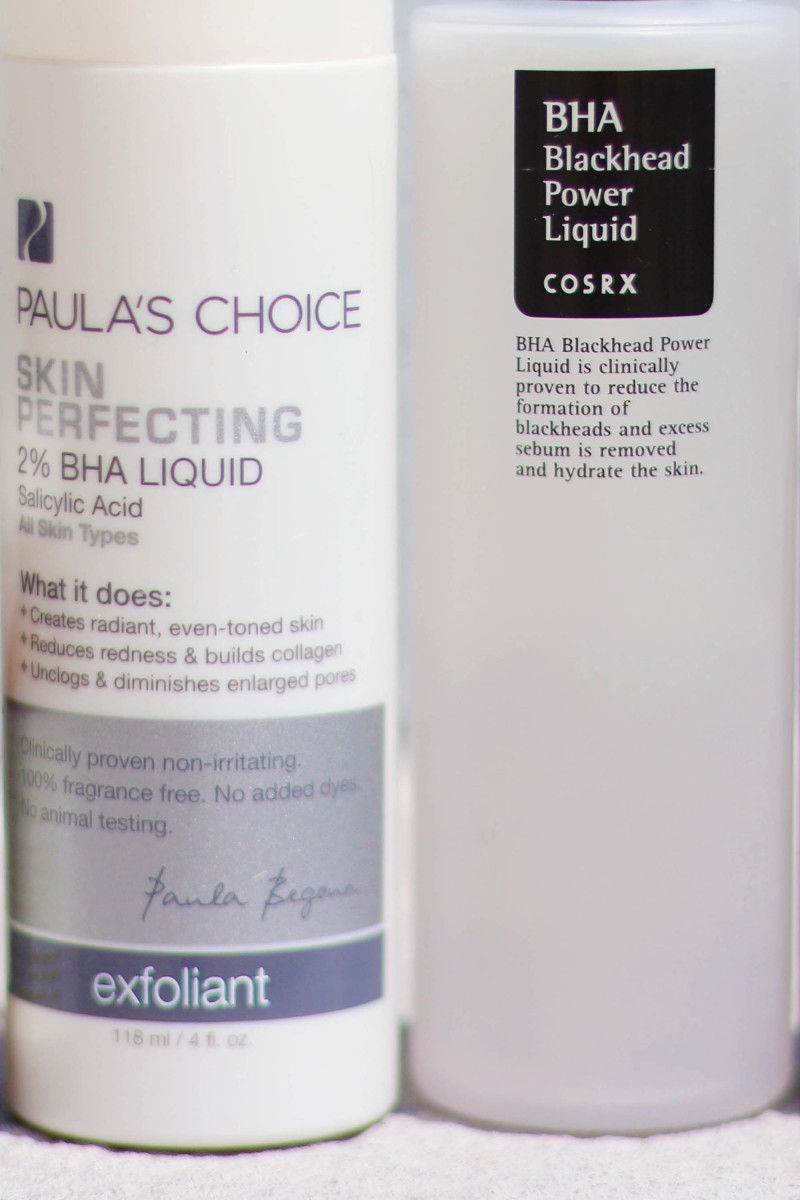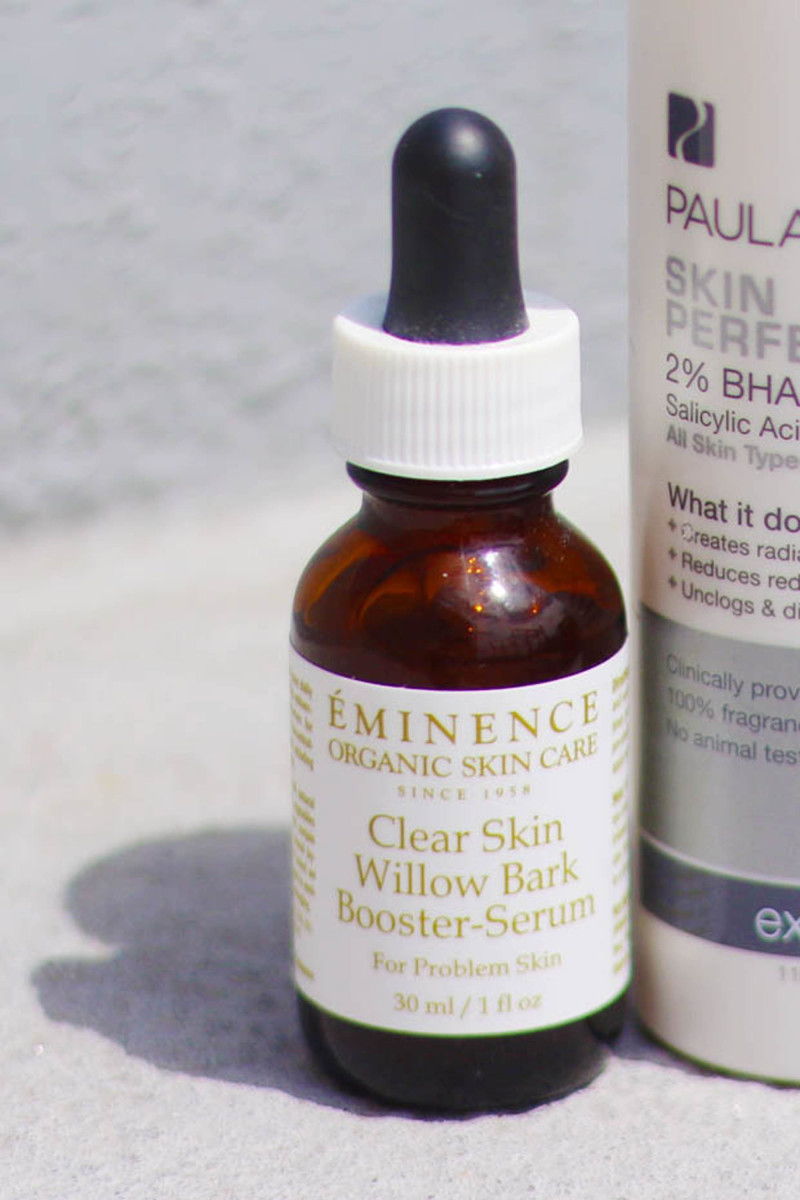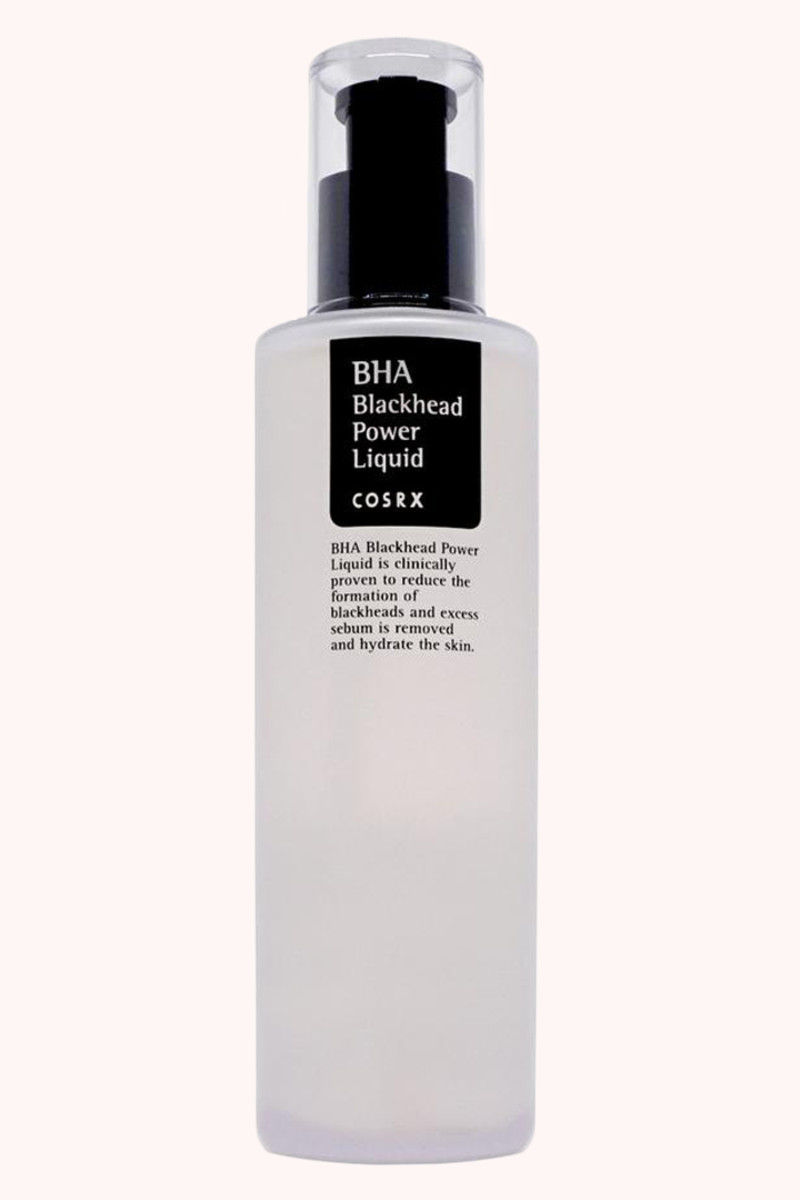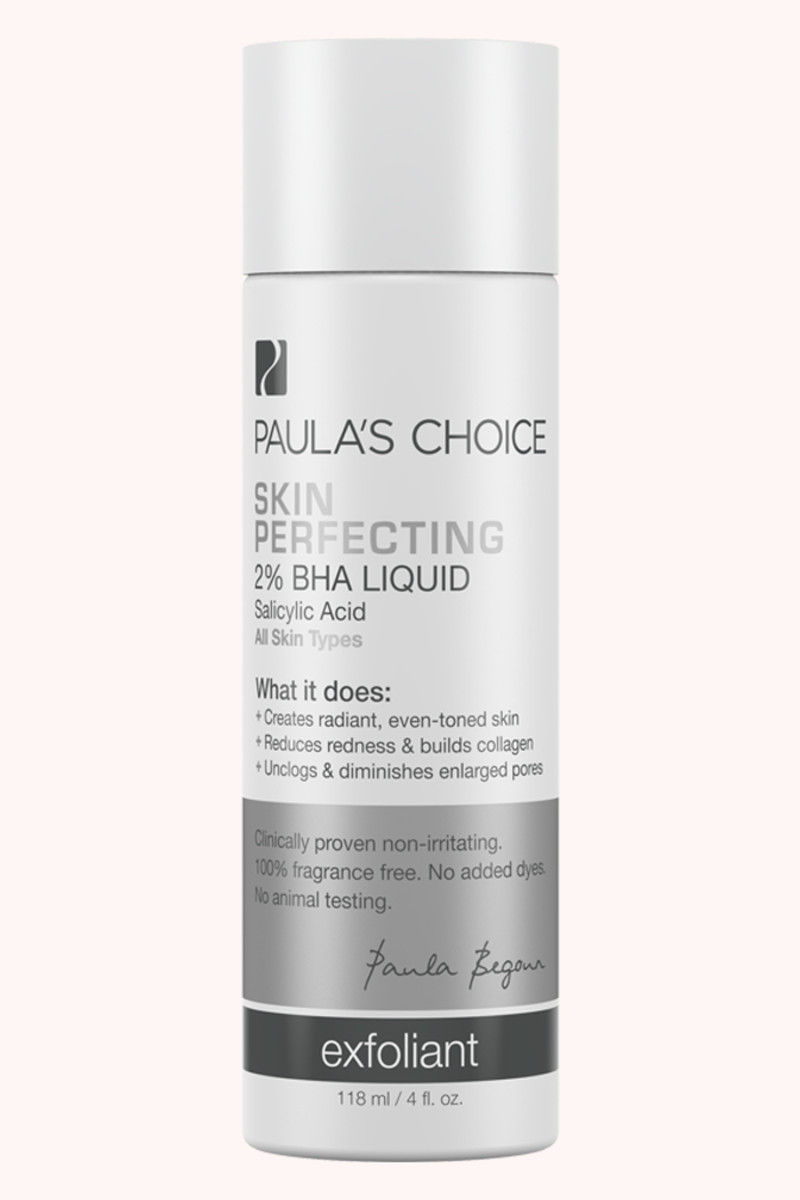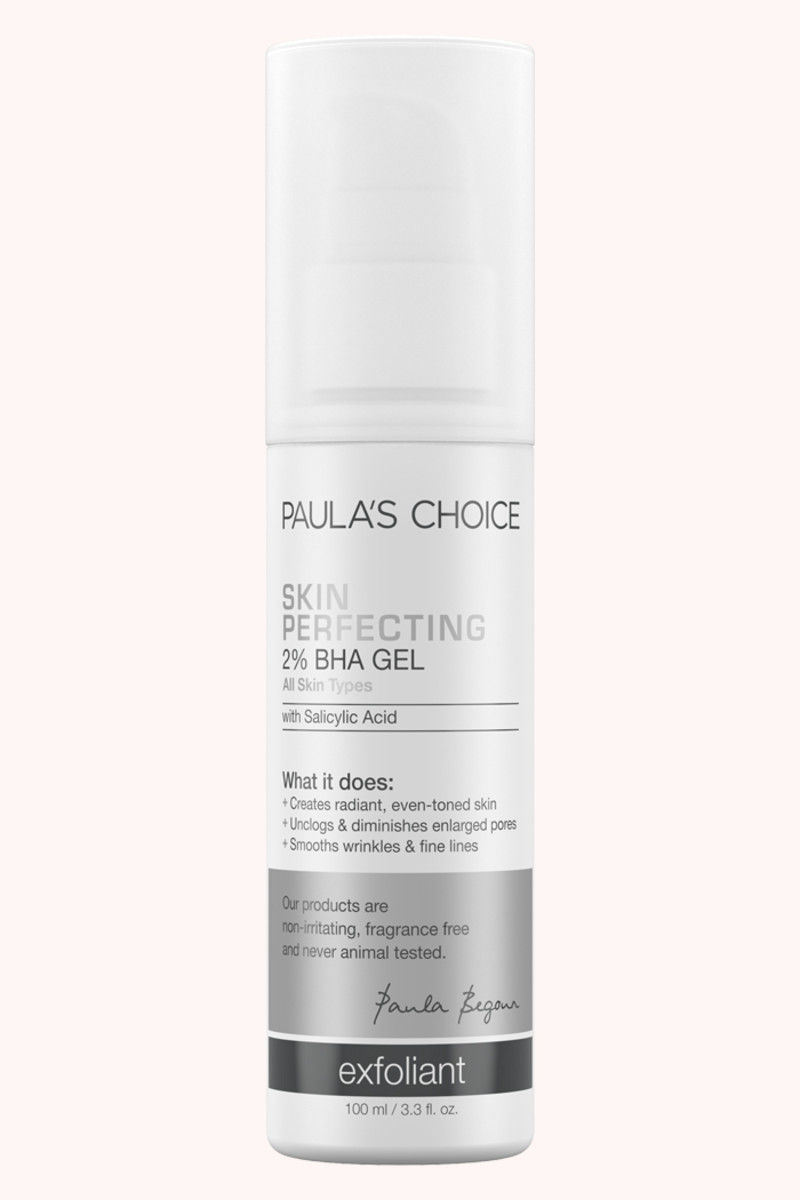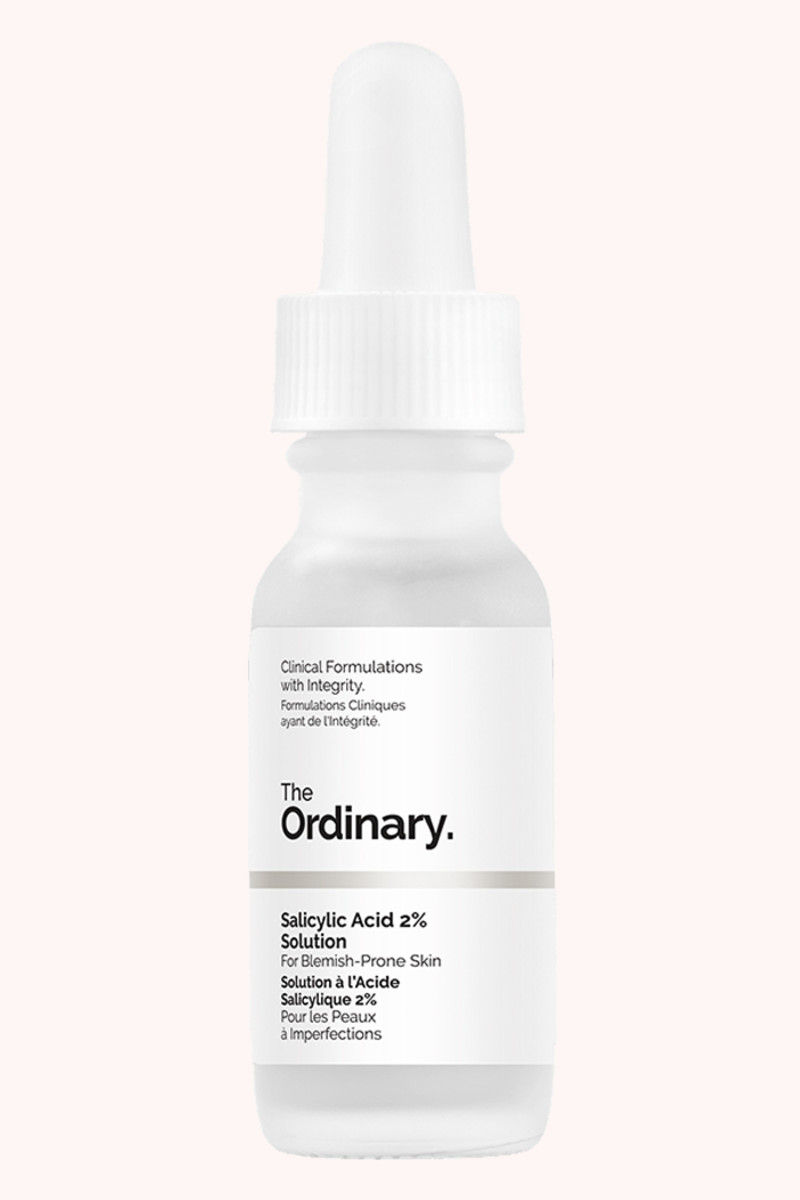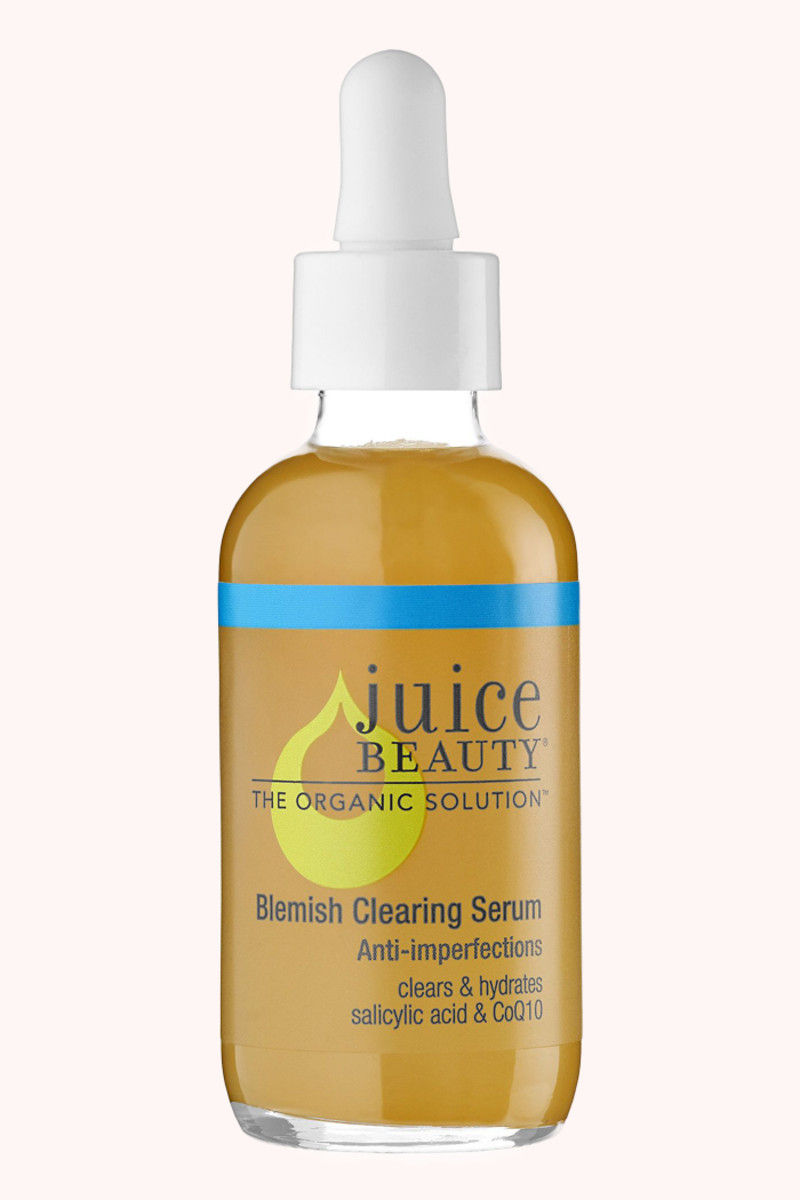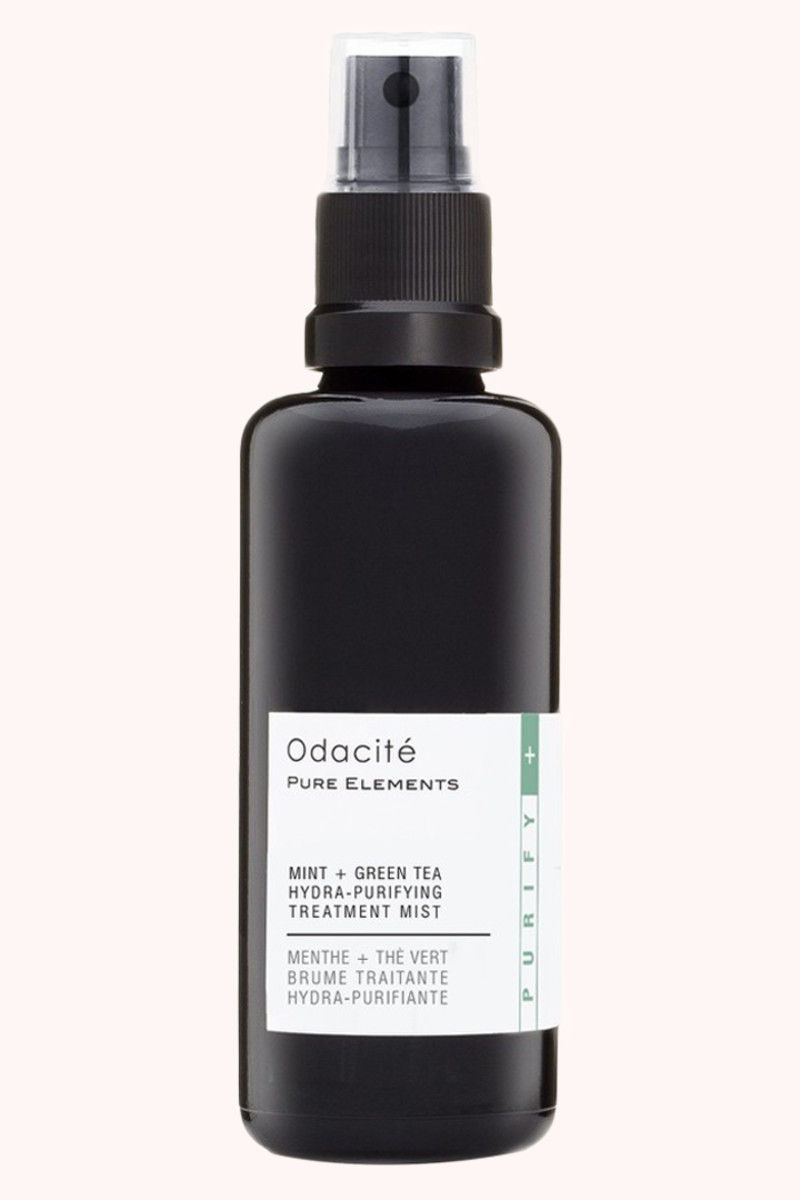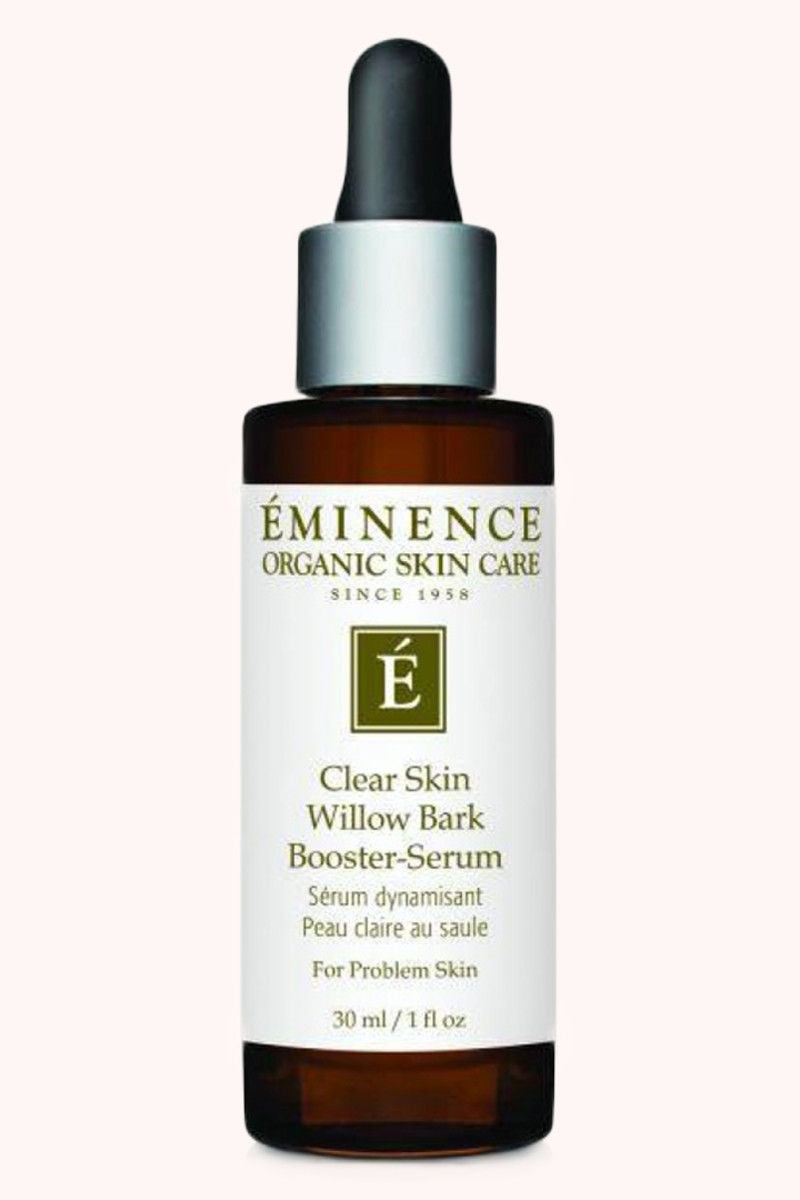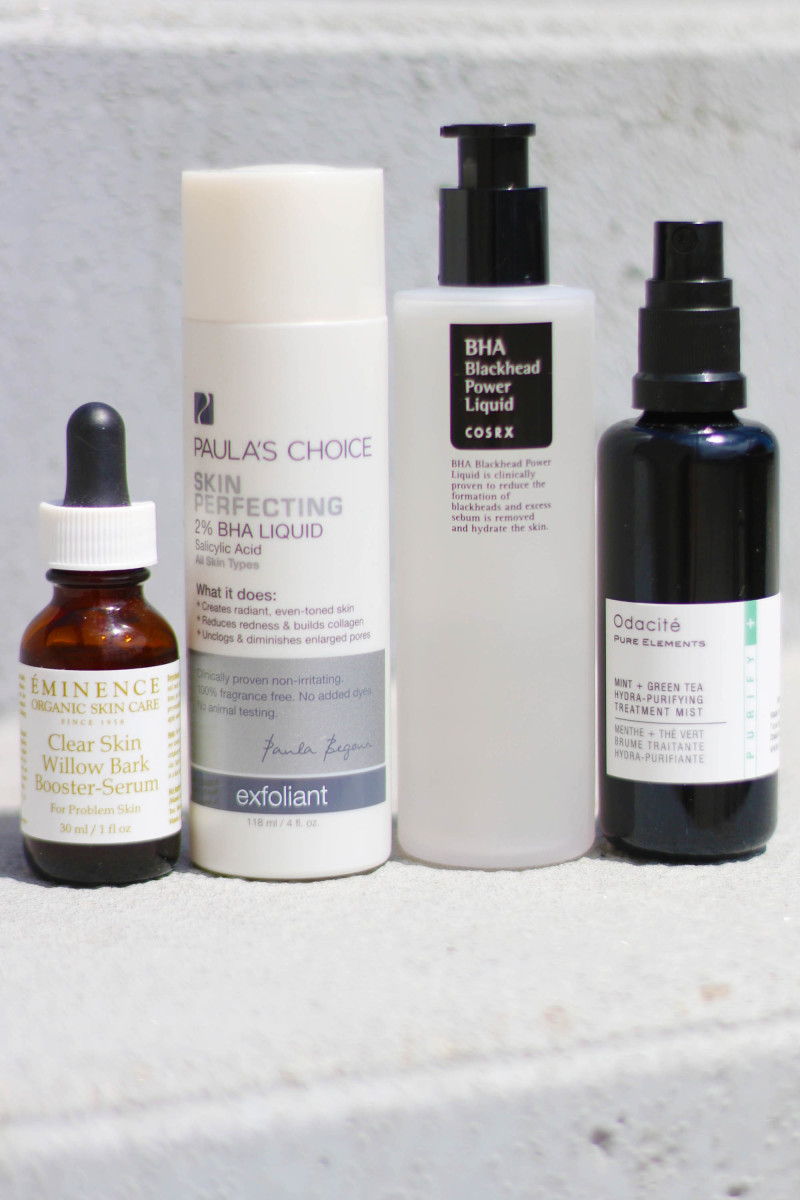Why Salicylic Acid Is the Best Acid for Your Skin
Confession: I've been cheating on Lotion P50 with salicylic acid.
It's shocking, I know. Few beauty products are as sought after as the lactic acid-based P50, an exfoliating toner that has been dubbed “Jesus in a Bottle.” I do still love it.
But I think I love salicylic acid even MORE.
Previously, I'd written off salicylic acid as strictly for people with acne. It's not! In fact, I've discovered it can treat an array of skin concerns, not just pimples, and has a much better safety profile than glycolic acid.
In this article, you will find out:
- How salicylic acid works
- Why it can benefit ALL skin types
- The best salicylic acid treatments on the market
- How to incorporate salicylic acid into your routine
Contents
- 1 What is Salicylic Acid?
- 2 The Difference Between AHAs and BHAs
- 3 Salicylic Acid Benefits
- 4 Blackheads, Clogged Pores and Acne
- 5 Oily Skin and Large Pores
- 6 Dull, Rough, Aged Skin
- 7 Hyperpigmentation
- 8 Safe Alternative to Glycolic
- 9 The Best Salicylic Acid Treatments
- 10 COSRX BHA Blackhead Power Liquid
- 11 Paula's Choice Skin Perfecting 2% BHA Liquid
- 12 Paula's Choice Skin Perfecting 2% BHA Gel
- 13 The Ordinary Salicylic Acid 2% Solution
- 14 Juice Beauty Blemish Clearing Serum
- 15 Odacité Mint + Green Tea Hydra-Purifying Treatment Mist
- 16 Éminence Clear Skin Willow Bark Booster-Serum
- 17 How to Use Salicylic Acid
- 18 Conclusion
What is Salicylic Acid?
Salicylic acid is a beta-hydroxy acid (BHA).
It's also the most common BHA, so I'm using the terms “salicylic acid” and “BHAs” interchangeably in this article. Other BHAs you might see on labels include:
- salicylate
- betaine salicylate
- sodium salicylate
- willow bark extract
- beta hydroxybutanoic acid
- tropic acid
- trethocanic acid
All of these ingredients belong to the same family as aspirin (salicylates), and are anti-inflammatory and mildly antibacterial.
As exfoliants, they work by softening and dissolving keratin, the protein found in our skin that causes cells to stick together. This makes the dead skin cells much easier to slough off the skin's surface.
What makes salicylic acid and other BHAs even more beneficial is that they are also oil-soluble. So rather than remaining on the surface, they can penetrate deep into sebum-filled pores! There, they exfoliate the pore lining, which loosens clogs and allows oil to flow out more freely.
But like I said, you don't need to have acne to try salicylic acid. It is what is known as a “keratolytic agent”—a substance that helps normalize the skin's keratinization process (shedding of skin cells). As I mentioned here, abnormal keratinization is associated with numerous other skin conditions, from keratosis pilaris to eczema to dryness… so salicylic acid actually has a much wider range of uses than it is known for!
[Read more about vitamin A and acne]
The Difference Between AHAs and BHAs
While salicylic acid is a BHA, glycolic acid is an AHA—alpha-hydroxy acid.
This chart summarizes the key differences between AHAs and BHAs, but let's go over them in a bit more detail:
- Exfoliation: AHAs (such as glycolic and lactic acids) and BHAs both exfoliate the skin's surface. They target the “glue” between skin cells to make it easier for the dead cells to be released. Because of this keratin-softening action, both AHAs and BHAs have humectant qualities (keeping water in the skin).
- Solubility: AHAs are only water-soluble, not oil-soluble. That means, unlike BHAs, they won't be able to penetrate through sebum to deep-clean the pores.
- Irritation: All acids have the potential to be irritating or drying when used in too high concentrations, or too frequently. But glycolic acid has a reputation as the most irritating acid, due to its small molecule size. Salicylic acid has less risk, because of its larger molecules and anti-inflammatory properties. “While some AHAs and other acids can trigger post-inflammatory hyperpigmentation in patients with darker skin types, you won't see that with salicylic acid,” says Dr. Haleh Bakshandeh. “It's a very safe and predictable acid.”
- UV sensitivity: Although it's always best to wear sunscreen when using ANY acid, AHAs tend to make skin more photosensitive than BHAs do (see this study comparing glycolic with salicylic acid).
Now let's talk about how salicylic acid can improve your skin!
Salicylic Acid Benefits
Most people aren't aware of salicylic acid's many benefits because it is usually only found in spot treatments for acne. I'm not talking about those (I never did find them very effective).
I'm talking about an entirely different concept: a low-dose salicylic acid treatment that you put ALL OVER YOUR FACE.
For some reason, brands have been so focused on AHAs that there aren't too many of these products on the market—but the ones that do exist have an extremely loyal following. (I'll give you some product recs in a moment!)
The reason is that applying a gentle salicylic acid daily, just like people use Lotion P50, can dramatically improve your skin. As it turns out, Biologique Recherche doesn't have the monopoly on life-changing skincare!
Here are some specific skin benefits you can expect from salicylic acid:
Blackheads, Clogged Pores and Acne
If you're struggling with any kind of congestion, a salicylic acid or BHA product is a must. Its ability to loosen plugs and dissolve debris in the pores can help with blackheads, clogs and active breakouts. Its antibacterial, anti-inflammatory properties can also fight P. acnes bacteria and calm inflamed pimples.
But I think the real magic is in salicylic acid's ability to PREVENT comedones from forming in the first place! That's where the daily low-dose application comes in. “Instead of treating pimples as they appear, it's more effective to use a gentle product that contains salicylic acid every day,” says Dr. Whitney Bowe. “This helps prevent breakouts on a regular basis.”
Oily Skin and Large Pores
Derms agree: Salicylic acid is one of the few ingredients that can actually SLOW DOWN your skin's oil production! (“Salicylic acid decreases oil production,” says Dr. Annie Chiu, while Dr. Sue Ann Wee says “salicylic acid can reduce sebum secretion.”) The trick is to find the right amount and frequency to keep your skin's oils in balance without over-drying.
Salicylic acid can also help with pore size. “The reason pores look bigger than they actually are is because they're clogged with dead skin cells mixed with oil,” says esthetician Shani Darden. Once salicylic acid unclogs them, they're not so stretched out and will appear smaller.
Dull, Rough, Aged Skin
There's no reason why you can't use a BHA the same way you'd use an AHA, for brighter, smoother and younger-looking skin. “The exfoliative properties of salicylic acid have been shown, over time, to diminish the appearance of fine lines and wrinkles by promoting collagen growth,” says Dr. Dendy Engelman. “Exfoliation leads to a reduction in thickness of the dead-skin-cell layer, which gives the skin a brighter, more glowing appearance.”
Note: I don't think it actually increases collagen growth, but I'll explain that in a second below.
Hyperpigmentation
Salicylic acid is also a pigmentation fighter—not just because of its exfoliating effect, but also from its ability to inhibit melanin formation with low risk of irritation. “I use it to treat patients with darker skin looking to correct sun and age spots and hyperpigmentation issues,” says Dr. Bakshandeh.
Safe Alternative to Glycolic
One of the most important reasons to try salicylic acid is because it's SAFE. If you're going to use an acid long-term, I think BHAs have a much better safety profile than AHAs, particularly glycolic acid.
It was celebrity esthetician Kate Somerville who got me looking into glycolic acid when she mentioned that “it can actually kill live tissue.” What the what?! It turns out she's right… glycolic acid triggers cell death through calcium overload, which is the same biochemical process involved in stress-induced situations such as hypoxia.
As for “collagen growth”—that's the main reason glycolic acid has been so popular, because it's touted as one of the best anti-aging treatments. It is said to have the ability to reach the dermis, where it increases collagen production.
I'm no longer sure that's such a good thing. Excess collagen formation is in fact an inflammatory response, and the root cause of scar tissue, fibrosis and wrinkles. What we really want are flexible, elastic cells—not hardened collagen deposits. Studies have shown that while AHAs stimulate collagen fibres and increase skin thickness, salicylic acid decreases skin thickness. I think that's actually a positive, since we know it is normalizing keratinization. Dr. Loren Pickart talks more about collagen and scar formation here.
The Best Salicylic Acid Treatments
Ready to start treating your skin with a gentle BHA? Here are your best bets:
COSRX BHA Blackhead Power Liquid
You don't need to have blackheads to use COSRX BHA Blackhead Power Liquid. It contains 4 percent betaine salicylate—apparently equivalent to 2 percent salicylic acid—in a moisturizing gel base. I also love that it has niacinamide, for extra brightening. I can't live without this product… I even have my mom using it now, as I wanted to see if it worked as well on drier, mature skin. (It does. She loves it, too.) Believe the hype!
Where to buy: Amazon.ca ‣ Amazon.com ‣ Ulta Beauty ‣ Soko Glam ‣ Cult Beauty
Ingredients: Salix Alba (Willow) Bark Water, Butylene Glycol, Betaine Salicylate, Niacinamide, 1,2-Hexanediol, Arginine, Panthenol, Sodium Hyaluronate, Xanthan Gum, Ethyl Hexanediol.
Paula's Choice Skin Perfecting 2% BHA Liquid
Paula's Choice Skin Perfecting 2% BHA Liquid is the other, equally popular BHA treatment. This one features 2 percent salicylic acid and has a clear liquid texture (some describe it as oily, but I didn't find that). I just finished testing this for a few weeks and found it as effective as the COSRX, but just slightly more drying.
Where to buy: Nordstrom ‣ Amazon.com ‣ Birchbox ‣ Dermstore ‣ Paula's Choice
Ingredients: Water (Aqua), Methylpropanediol (hydration), Butylene Glycol (hydration), Salicylic Acid (beta hydroxy acid/exfoliant), Polysorbate 20 (stabilizer), Camellia Oleifera Leaf Extract (green tea/skin calming/antioxidant), Sodium Hydroxide (pH balancer), Tetrasodium EDTA (stabilizer).
Paula's Choice Skin Perfecting 2% BHA Gel
Although the liquid is their worldwide bestseller, there's also a gel format: Paula's Choice Skin Perfecting 2% BHA Gel. This one gives oil-free hydration, and is also silicone-free. If your skin is on the normal to oily side, this is a great option for you.
Where to buy: Amazon.com ‣ Dermstore ‣ SkinCareRx ‣ Paula's Choice
Ingredients: Water, Methylpropanediol, Butylene Glycol, (hydration), Polysorbate 20 (texture-enhancing), Salicylic Acid (beta hydroxy acid/exfoliant), Phytosphingosine (skin-renewing), Hydroxyethylcellulose (texture-enhancing), Vitis Vinifera Seed Extract (grape extract/antioxidant), Camellia Sinensis Flower/Leaf/Stem Extract (green tea/antioxidant) Epilobium Angustifolium Flower/Leaf/Stem Extract (willow herb/skin-soothing), Bisabolol (skin-soothing), Sodium Hydroxide (pH-adjusting), Tetrasodium EDTA (stabilizer).
The Ordinary Salicylic Acid 2% Solution
The Ordinary Salicylic Acid 2% Solution is a brand new alternative to the Paula's Choice BHA, with a light gel texture. It's the same strength, but I find it a little stronger. It's also a super-affordable way to try salicylic acid (keeping in mind that you're also getting a smaller bottle).
Where to buy: Sephora ‣ Beautylish ‣ ASOS ‣ Beauty Bay
Ingredients: Aqua (Water), Hamamelis virginiana leaf water, Cocamidopropyl Dimethylamine, Salicylic Acid, Dimethyl Isosorbide, Trisodium Ethylenediamine Disuccinate, Citric Acid, Polysorbate 20, Hydroxyethylcellulose, Triethanolamine, Ethoxydiglycol, Potassium Sorbate, Sodium Benzoate, 1,2-Hexanediol, Caprylyl Glycol.
Juice Beauty Blemish Clearing Serum
If the above options are too strong for your skin, you need to try Juice Beauty Blemish Clearing Serum. With 0.75 percent salicylic acid, it's milder than the 2 percent products—but still potent enough to give you great exfoliation, anti-acne and brightening effects. You don't need to have blemishes to benefit from this!
Where to buy: Sephora ‣ Amazon.com ‣ Neiman Marcus ‣ Ulta Beauty ‣ Bloomingdale's ‣ Anthropologie ‣ Dermstore ‣ Bluemercury ‣ SkinStore ‣ SkinCareRx ‣ Juice Beauty
Active ingredients: Salicylic Acid 0.75%. Other ingredients: Vitis Vinifera (Organic White Grape Juice/Jus De Raisin Blanc Bio)*, Pyrus Malus (Organic Apple Juice/Jus De Pomme Bio)*, Aloe Barbadensis (Organic Aloe Juice/Jus D'Aloès Bio)*, Citrus Medica Limonum (Organic Lemon Juice/Jus De Citron Bio)*, Glycerin+, Sclerotium Gum, Algin, Salix Alba (Willow Bark Extract/Extrait D'Écorce De Saule), Allantoin, Decyl Glucoside+, Panthenol (Vitamin B5/Vitamine B5), Magnesium Ascorbyl Phosphate (Vitamin C/Vitamine C), Tocopherol (Vitamin E/Vitamine E), Salvia Officinalis (Sage Leaf Oil/Huile De Feuilles De Sauge), Ubiquinone (Coq10), Saccharum Officinarum (Sugar Cane Extract/Extrait De Canne À Sucre), Camellia Sinensis (Organic White Tea Leaf Extract/Extrait Des Feuilles De Thé Blanc Bio)*, Camellia Oleifera (Organic Green Tea Extract/Extrait De Feuilles De Thé Vert Bio)*, Lavandula Angustifolia (Organic Lavender Extract/Extrait De Lavande Bio)*, Chamomilla Recutita (Organic Chamomile Extract/Extrait De Camomille Bio)*, Melissa Officinalis (Lemon Balm Leaf Extract/Extrait De Feuilles De Mélisse), Algae Extract, Sodium Benzoate, Potassium Sorbate, Citric Acid, Lavandula Angustifolia (Lavender Oil/Huile De Lavande), Boswellia Serrata (Frankincense Oil/Huile D'Encens). *Certified Organic Ingredient / Ingrediént Certifié Bio + Plant Derived / Origine Végétale
Odacité Mint + Green Tea Hydra-Purifying Treatment Mist
Odacité Mint + Green Tea Hydra-Purifying Treatment Mist is perfect if you're looking for an all-natural option and/or something super-gentle. Although they don't disclose the percentage, it features willow bark extract in an aloe vera base. To get the most benefit, use it on bare skin, underneath your serum or moisturizer, to seal in the active. It's also great for controlling oil throughout the day without disturbing your makeup.
Where to buy: Nordstrom ‣ Amazon.com ‣ The Detox Market ‣ Well.ca ‣ Cult Beauty
Ingredients: Aloe Barbadensis (Aloe Vera) Leaf Juice*, Mentha Piperita (Peppermint) Extract*, Vegetable Glycerin, Salix Alba (Willow Bark) Extract*, Camellia Sinensis (Green Tea) Extract*. *Organic
Éminence Clear Skin Willow Bark Booster-Serum
Éminence Clear Skin Willow Bark Booster-Serum is another all-natural option, with willow bark extract in a serum format. Although it's geared at “problem skin,” I think this would be gentle enough for all skin types.
Where to buy: Amazon.com ‣ Dermstore ‣ SkinCareRx
Ingredients: Salix Alba (Willow Bark) Extract, Mentha Piperita (Peppermint) Tea, Equisetum Arvense (Horsetail) Extract, Vegetable Glycerin, Panthenol, Juglans Regia (Walnut) Leaf Extract, Cyclodextrin, Melaleuca Alternifolia (Tea Tree) Oil, Xanthan Gum, Sodium Benzoate, Potassium Sorbate, Lactic Acid, Vegetable Squalane, Ubiquinone (Coenzyme Q10), Tocopheryl Acetate (Vitamin E), Ascorbyl Palmitate (Vitamin C Ester), Sodium Salicylate, Pimpinella Anisum (Anise) Oil.
How to Use Salicylic Acid
Lastly, a few tips on how to get started with salicylic acid!
If you're new to acids, you could introduce salicylic a few times a week, and build up to more frequent applications from there. Since I was already on daily lactic acid, I started at once a day and now I'm tolerating twice-daily applications with no problems at all. But you may find that once a day or every other day works better for you.
Step 1: Wash your face as usual. Avoid using any other exfoliants at the same time as salicylic acid.
Step 2: Spread a thin layer of the acid over your face, avoiding the eye area. Alternatively, you can just concentrate it on areas of congestion or dead skin.
Step 3: Wait for the the acid to absorb before layering any hydrators, makeup or sunscreen on top. You don't have to wash it off. If you are using other actives, such as vitamin C, niacinamide or retinoids, you should apply the salicylic acid first, and then wait as long as you can—ideally, 20 to 30 minutes—for your skin's pH to return to normal.
Note: If your skin is very sensitive, or if you are concerned about post-inflammatory pigmentation, consider doing a patch test and short-contact application at first. (While Dr. Sejal Shah says salicylic acid is safe to use on all skin colours, there is a risk of darkening whenever you apply potentially irritating products to medium-to-dark skin tones.) With short-contact therapy, you wash it off after a few minutes, gradually increasing the time it is left on so your skin can build up a tolerance.
Conclusion
Now you know why I've switched allegiance from Lotion P50 to the COSRX BHA.
Believe me, I never thought this would happen, since I've been using (and raving about) P50 for so many years. Heck, I didn't even want to stop using it in order to test the COSRX, which I'd purchased on a whim with low expectations… but I'm SO GLAD I did!
For me, daily BHA treatments have annihilated annoying, lingering, under-the-skin congestion (the kind you can't see but can feel). My pores seem cleaner, my skin is smoother and produces less oil, and dark marks are fading more quickly. Obviously, it's amazing at preventing spots, and any that do arise are less inflamed, and disappear fast.
The only downside has been some minor flakiness (not even dryness), but that's improved with continued use. I also do nightly cloth cleansing and use lots of squalane oil to keep it at bay.
Needless to say, I think salicylic acid is well worth your consideration!
Have you tried salicylic acid?
What changes have you noticed in your skin?
Found any other great BHA products?
